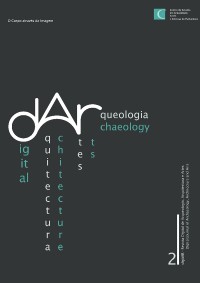Please use this identifier to cite or link to this item:
https://hdl.handle.net/10316.2/39302| DC Field | Value | Language |
|---|---|---|
| dc.contributor.author | Amorós Blasco, Lorena | - |
| dc.date.accessioned | 2016-09-01T23:08:19Z | |
| dc.date.accessioned | 2020-09-16T08:29:47Z | - |
| dc.date.available | 2016-09-01T23:08:19Z | |
| dc.date.available | 2020-09-16T08:29:47Z | - |
| dc.date.issued | 2015 | - |
| dc.identifier.issn | 2182-844X (digital) | - |
| dc.identifier.uri | https://hdl.handle.net/10316.2/39302 | - |
| dc.description.abstract | Postmodernism has produced an ampliation of the visual field, opened out beyond the baroque apotheosis foretold by Walter Benjamin or the triumph of the simulacrum defended by authors like Jean Baudrillard. Irradiation of the mass media has led dismiss closed places of thinking, and in its place it has contributed to a knowledge that begins to diffuse out of the art specific channels. Aware of this contemporary scene, we treat in our research the self-referential image linked to the will of self-destruct from different artistic perspectives. The development of this perspectives about identity is aimed at defending our hypothesis, which seeks to corroborate how the extreme experience can be an active device and generator of knowledge, linked to the search for identity and self-affirmation of the subject. | eng |
| dc.description.abstract | En la Posmodernidad se ha producido una ampliación del campo de lo visual, desplegada más allá de la apoteosis barroca de la mirada que pronosticara Walter Benjamin o del triunfo del simulacro que abanderan pensadores como Jean Baudrillard. La irradiación de los mass-media ha propiciado desestimar los lugares de pensamiento cerrados, y en su lugar ha favorecido un conocimiento que empieza a difundirse fuera de los canales especializados del arte. Conscientes de esta escena contemporánea, en nuestra investigación nos detendremos en la imagen autorreferencial vinculada a la voluntad de autodestrucción desde distintas perspectivas artísticas. El desarrollo de esta perspectiva sobre la identidad está orientado a defender nuestra hipótesis de partida, que trata de corroborar cómo la experiencia límite puede ser un dispositivo activo y generador de conocimiento, vinculado a la búsqueda de identidad y a la auto-reafirmación del sujeto. | spa |
| dc.language.iso | spa | - |
| dc.publisher | Centro de Estudos em Arqueologia, Artes e Ciências do Património | - |
| dc.rights | open access | - |
| dc.subject | Arte Contemporáneo | - |
| dc.subject | identidad | - |
| dc.subject | autodestrucción | - |
| dc.subject | Contemporary Art | eng |
| dc.subject | identity | eng |
| dc.subject | self-destruction | eng |
| dc.title | Corpografías del límite: entre Eros y Tánatos | por |
| dc.type | article | - |
| uc.publication.collection | digitAR nº 2 | - |
| uc.publication.firstPage | 122 | - |
| uc.publication.issue | 2 | - |
| uc.publication.lastPage | 130 | - |
| uc.publication.location | Coimbra | - |
| uc.publication.journalTitle | digitAR: Revista Digital de Arqueologia, Arquitectura e Artes | - |
| dc.identifier.doi | 10.14195/2182-844X_2_7 | - |
| uc.publication.section | II - Entre deuses e demónios | - |
| uc.publication.digCollection | IP | - |
| uc.publication.digCollection | B1 | - |
| uc.publication.orderno | 9 | - |
| uc.publication.area | Artes e Humanidades | - |
| uc.publication.manifest | https://dl.uc.pt/json/iiif/10316.2/39302/216463/manifest?manifest=/json/iiif/10316.2/39302/216463/manifest | - |
| uc.publication.thumbnail | https://dl.uc.pt/retrieve/11259631 | - |
| uc.itemId | 71413 | - |
| uc.thumbnail.uri | https://dl.uc.pt/iiif-imgsrv/11259610/dl!3!55!35!60!5535609103804098717336540373372858806 | - |
| item.grantfulltext | open | - |
| item.fulltext | With Fulltext | - |
| Appears in Collections: | digitAR: Revista Digital de Arqueologia, Arquitectura e Artes | |
Files in This Item:
| File | Description | Size | Format | |
|---|---|---|---|---|
| corpografias_del_limite_entre_eros_y_tanatos.pdf | 1.27 MB | Adobe PDF |  |
Items in DSpace are protected by copyright, with all rights reserved, unless otherwise indicated.
